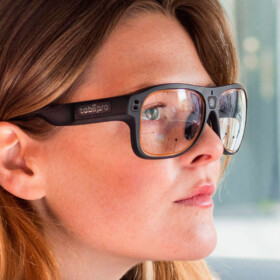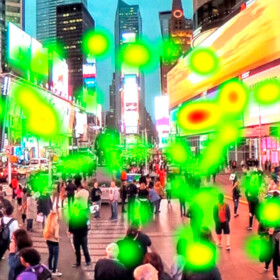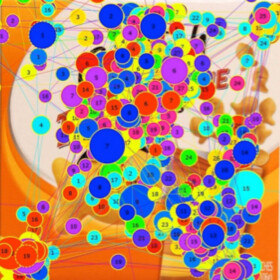Eye Tracking
Tourism, a purely visual and experiential industry.
Eye Tracking allows the monitoring, tracking, control and study of the individual’s eye movements, analysing their reaction and behaviour to certain stimuli.
It answers several questions:
- What captures the consumer’s attention?
- Which elements arouse the most interest and where they are located?
- How do they influence their behaviour?
- How and when does the interaction occur?
Sight is the sense that provides the most information to the nervous system. The analysis of their movements and patterns through a scientific methodology will provide key neurosensory information for the analysis of consumer behaviour and emotions, both consciously and unconsciously, and will allow inferring the intentions, abilities and cognitive processes of individuals.
The study of ocular behaviour provides an objective and quantitative measure of fixation and focus points based on different sensory, motor or cognitive demands.
Measurement techniques
We have the latest technology in eye tracking in a wide variety of environments.


Wearable EYE TRACKING
This system allows obtaining an objective vision of the consumer’s visual behaviour in real environments through glasses that incorporate infrared cameras.


Virtual Reality EYE TRACKING
Eye tracking integrated in virtual reality glasses, which allows us to know the visual behaviour of the consumer in virtual environments.


Screen based EYE TRACKING
Eye Tracking fijo en pantalla. Esta herramienta evalúa los patrones visuales de los individuos ante ciertos estímulos predeterminados mostrados en pantalla.


Webcam EYE TRACKING
This technique allows greater flexibility and access to the target audience since visual tracking can be done at any time and place with a webcam.
Eye Tracking Metrics
Fixation metrics are those centred on the individual’s eye when focussing on a certain area of interest (AOI).Number of fixations during an interval of time.
- Duration. Time lapse between the first and last look in the fixation sequence.
- Time to first fixation (TTFF). Time elapsed until the first gaze fixation on the area of interest.
- Total or partial fixation. Number of points that attract the eye in a specific interval inside or outside the time of interest (TOI).
- Sequences of fixation: Chronological information and position of the fixation.
Saccadic metrics, relating to eye movements between fixations.
- Number of moves during an interval of time in the AOI.
- Peaks of speed reached during the movements.
- Amplitude of movement.
- Direction.
- Latency. Time that elapses between the beginning of the visual stimulus and the first saccadic movement.
- First shot in the AOI.
- Saccadic entry and exit in the AOI.
- Total or partial saccadic. Number of saccades in a specific interval of time inside or outside the time of interest.
Visit Metrics, related to the group of gazes that is established in the AOI during an interval of time and prior to an exit saccadic movement
- Number of visits in the AOI
- Duration, time lapse between the first and last fixation in the AOI.
Click metrics, based on user interactions using a mouse when looking at different web pages during the experiment.
- Number of clicks
- Time to first click
- Time from first fixation to first click
- Total or partial clicks. Number of clicks in a specific interval inside or outside the time and area of interest.
Glances metrics, based on the analysis of gazes between the last fixation point outside the AOI before its entry, until the last fixation on the area of interest before the exit saccadic.
- Number
- Duration
Areas of Interest (AOI). These are the areas of interest defined by the researchers within the stimulus shown to the participant.
Outputs


Heat Maps
This shows how the gaze is distributed in front of the stimulus; it includes the fixation and ocular displacements in order to know the points that arouse greater attention and interest in the individual.


Gaze Plots
They show the location, chronology and time spent in fixation before a stimulus.